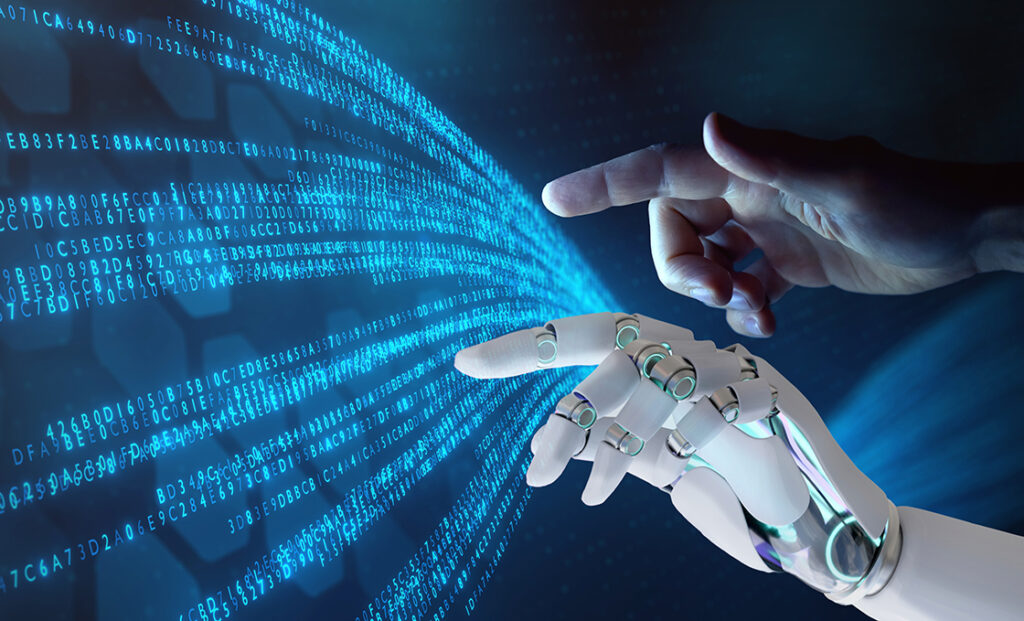How AI is Enhancing Cybersecurity: The Future of Threat Detection and Prevention
In today’s increasingly connected world, cybersecurity has become more important than ever. With cyber threats growing in complexity and frequency, traditional methods of defense often struggle to keep up. Enter Artificial Intelligence (AI), which is revolutionizing the way we approach cybersecurity. From detecting malicious activity to automating responses, AI is enhancing security systems and providing businesses and individuals with stronger defenses against evolving threats.
Let’s explore how AI is transforming the cybersecurity landscape and why it’s a game-changer in the fight against cybercrime.
1. AI-Powered Threat Detection
One of the biggest challenges in cybersecurity is identifying threats before they can cause damage. Hackers are constantly coming up with new ways to bypass security systems, and detecting suspicious activity in real-time is a complex task. This is where AI comes into play.
AI-powered systems use machine learning algorithms to analyze large volumes of data in real-time, identifying patterns and anomalies that could indicate a potential threat. Unlike traditional methods, which rely on pre-defined rules or known threats, AI can recognize new, previously unseen attack vectors by continuously learning from new data. This means AI can identify zero-day vulnerabilities—those that haven’t been discovered yet—more quickly and efficiently.
For example, AI-based intrusion detection systems (IDS) can monitor network traffic and immediately flag unusual behavior, such as an employee accessing files they normally wouldn’t or unusual login patterns. This early detection can prevent cybercriminals from breaching systems and limit the scope of any potential damage.
2. Predictive Analysis and Proactive Defense
In addition to detecting existing threats, AI can help predict future attacks, allowing businesses to adopt a more proactive approach to cybersecurity. By analyzing historical attack data, AI systems can identify trends and predict where future attacks might come from. This predictive capability helps organizations strengthen their defenses before an attack occurs, rather than simply reacting to breaches after the fact.
For example, AI can identify when certain attack patterns are likely to emerge, such as during a high-profile event, when attackers are more likely to exploit vulnerabilities. With this knowledge, organizations can bolster their defenses in advance, minimizing the risk of a successful attack.
3. Automating Incident Response
Another major advantage of AI in cybersecurity is its ability to automate responses to threats, saving both time and resources. In the event of a cyberattack, rapid response is critical in minimizing damage. AI-driven security systems can automatically take action in response to threats, such as blocking malicious traffic, isolating infected systems, or applying security patches.
For instance, AI can identify a malware attack and immediately isolate the infected network segment, preventing the malware from spreading further across the system. AI can also automatically update firewall rules or implement additional monitoring protocols to mitigate risks. By automating these processes, AI reduces the need for manual intervention, allowing security teams to focus on more complex tasks.
4. Identifying and Mitigating Phishing Attacks
Phishing is one of the most common and effective methods used by cybercriminals to steal sensitive information. Phishing attacks often rely on deceptive emails or websites that trick users into revealing passwords or credit card details. AI is playing a key role in identifying and preventing these types of attacks.
AI-powered email filtering systems can analyze incoming messages for suspicious content, such as misleading URLs, spelling errors, or suspicious attachments. Machine learning models can also assess the behavior of senders to determine whether they are likely to be impersonating legitimate entities. By filtering out phishing emails before they reach users’ inboxes, AI can help reduce the risk of successful phishing attacks.
Additionally, AI can detect fake websites by analyzing the structure and content of web pages, comparing them to legitimate sites. When users attempt to visit a phishing site, AI can block access, warning them of the potential threat.
5. Enhancing Endpoint Security
Endpoints—such as computers, mobile devices, and IoT devices—are frequent targets for cybercriminals because they provide easy access to networks. AI is playing a crucial role in securing these endpoints.
AI-powered endpoint protection platforms (EPP) use machine learning to monitor device activity, looking for signs of malicious behavior such as unusual file access, unauthorized applications, or abnormal data transfers. If the system detects any suspicious activity, it can take immediate action, such as blocking the suspicious application or quarantining the affected file. AI can even predict which devices might be more vulnerable based on their usage patterns and implement additional security measures accordingly.
Furthermore, AI can analyze the behavior of known malware, making it easier to detect and prevent new strains of viruses or ransomware. By identifying common characteristics in malware behavior, AI systems can spot new variants faster and more accurately than traditional security systems.
6. Combatting Insider Threats
While much of cybersecurity focuses on external threats, insider threats—where trusted individuals or employees intentionally or unintentionally cause harm—are also a significant concern. AI can help mitigate the risk of insider threats by monitoring employee behavior and detecting any signs of suspicious or abnormal activity.
For example, AI can track user actions and create a baseline of normal behavior. If an employee suddenly accesses files they don’t typically interact with or attempts to download large amounts of sensitive data, AI can flag this as a potential threat. In some cases, AI systems can automatically alert security teams, while in others, they can automatically lock down access to sensitive information or trigger additional authentication steps.
7. Reducing False Positives
One of the challenges of traditional cybersecurity systems is the high volume of false positives—alerts that flag harmless activities as potential threats. These false alarms can overwhelm security teams and lead to alert fatigue, making it harder to identify real threats.
AI helps reduce false positives by using machine learning to improve threat classification. As AI systems continuously learn from new data, they become better at distinguishing between legitimate activity and potential threats. This allows security teams to focus on more meaningful alerts and respond to them faster, without being distracted by numerous false alarms.
8. The Role of AI in Threat Intelligence Sharing
AI is also playing a significant role in threat intelligence sharing. As cyber threats become more sophisticated, it’s essential for organizations to share information about potential threats to strengthen collective defense efforts. AI can analyze threat data from multiple sources—such as threat feeds, blogs, and social media—to identify emerging trends and potential risks. It can then share this information in real-time with other organizations or threat intelligence platforms, helping them bolster their defenses and prepare for upcoming attacks.
The Future of AI in Cybersecurity
As cyber threats continue to evolve, the role of AI in cybersecurity will only become more critical. The combination of real-time threat detection, predictive analysis, automated responses, and enhanced endpoint security makes AI an invaluable tool in the fight against cybercrime. However, it’s essential to note that while AI can significantly improve cybersecurity, it should not be seen as a replacement for human expertise. A hybrid approach—where AI assists cybersecurity professionals—is likely the best path forward for securing systems against increasingly sophisticated threats.
In the end, AI is helping to create a more dynamic, adaptive, and responsive cybersecurity landscape, enabling organizations to stay one step ahead of cybercriminals and ensuring the safety of sensitive data in an increasingly digital world.


